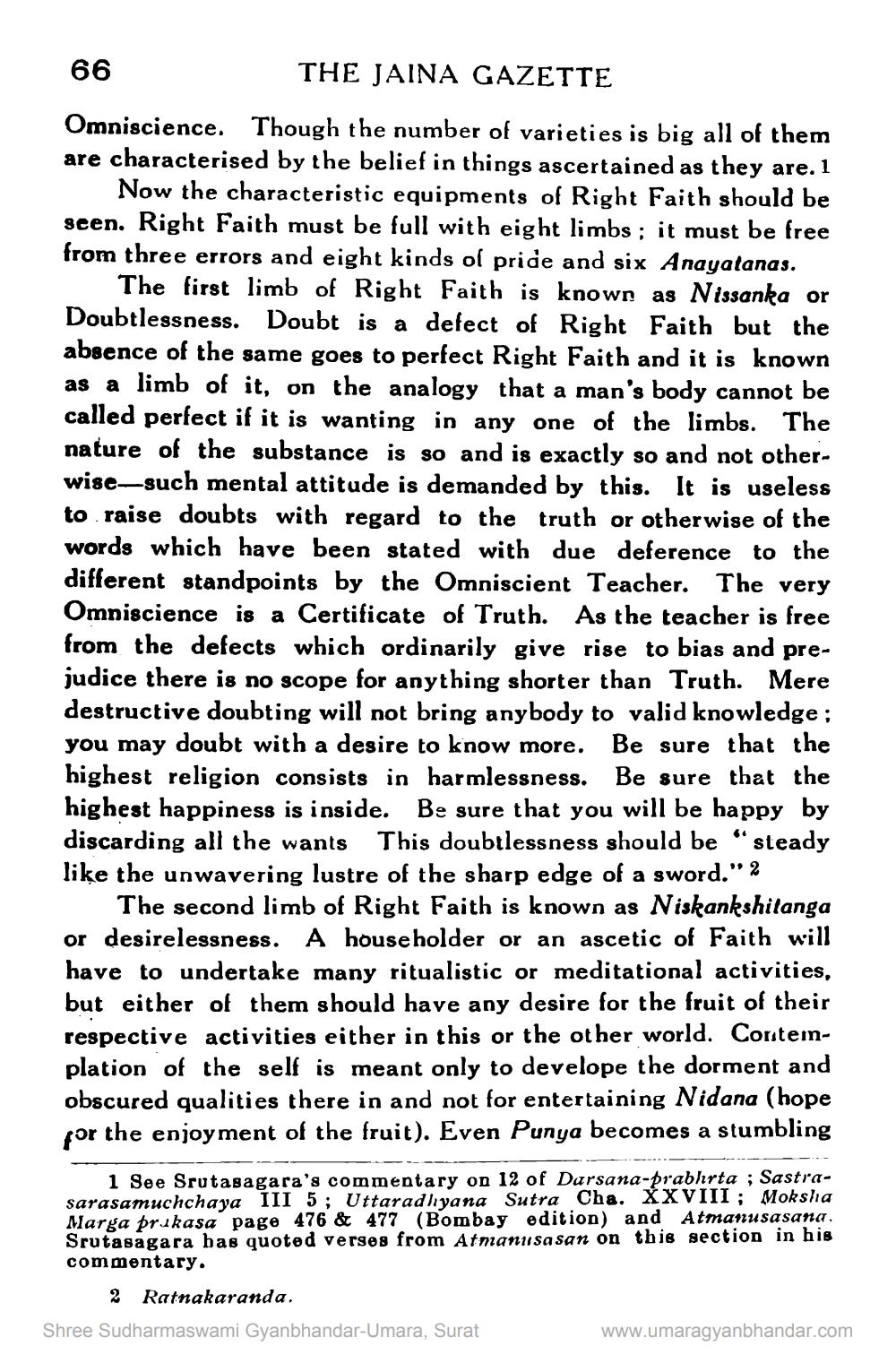________________
66
THE JAINA GAZETTE Omniscience. Though the number of varieties is big all of them are characterised by the belief in things ascertained as they are. 1
Now the characteristic equipments of Right Faith should be seen. Right Faith must be full with eight limbs; it must be free from three errors and eight kinds of pride and six Anayatanas.
The first limb of Right Faith is known as Nissanka or Doubtlessness. Doubt is a defect of Right Faith but the absence of the same goes to perfect Right Faith and it is known as a limb of it, on the analogy that a man's body cannot be called perfect if it is wanting in any one of the limbs. The nature of the substance is so and is exactly so and not otherwise—such mental attitude is demanded by this. It is useless to raise doubts with regard to the truth or otherwise of the words which have been stated with due deference to the different standpoints by the Omniscient Teacher. The very Omniscience is a Certificate of Truth. As the teacher is free from the defects which ordinarily give rise to bias and prejudice there is no scope for anything shorter than Truth. Mere destructive doubting will not bring anybody to valid knowledge ; you may doubt with a desire to know more. Be sure that the highest religion consists in harmlessness. Be sure that the highest happiness is inside. Be sure that you will be happy by discarding all the wants This doubtlessness should be “steady like the unwavering lustre of the sharp edge of a sword." %
The second limb of Right Faith is known as Niskankshitanga or desirelessness. A householder or an ascetic of Faith will have to undertake many ritualistic or meditational activities, but either of them should have any desire for the fruit of their respective activities either in this or the other world. Contemplation of the self is meant only to develope the dorment and obscured qualities there in and not for entertaining Nidana (hope for the enjoyment of the fruit). Even Punya becomes a stumbling
1 See Srutasagara's commentary on 12 of Darsana-prabhrta ; Sastrasarasamuchchaya III 5; Uttaradhiyana Sutra Cha. XXVIII; Moksha Marga prikasa page 476 & 477 (Bombay edition) and Atmanusasana. Srutasagara bas quoted verses from Atmanusa san on this section in his commentary.
2 Ratnakaranda. Shree Sudharmaswami Gyanbhandar-Umara, Surat
www.umaragyanbhandar.com




